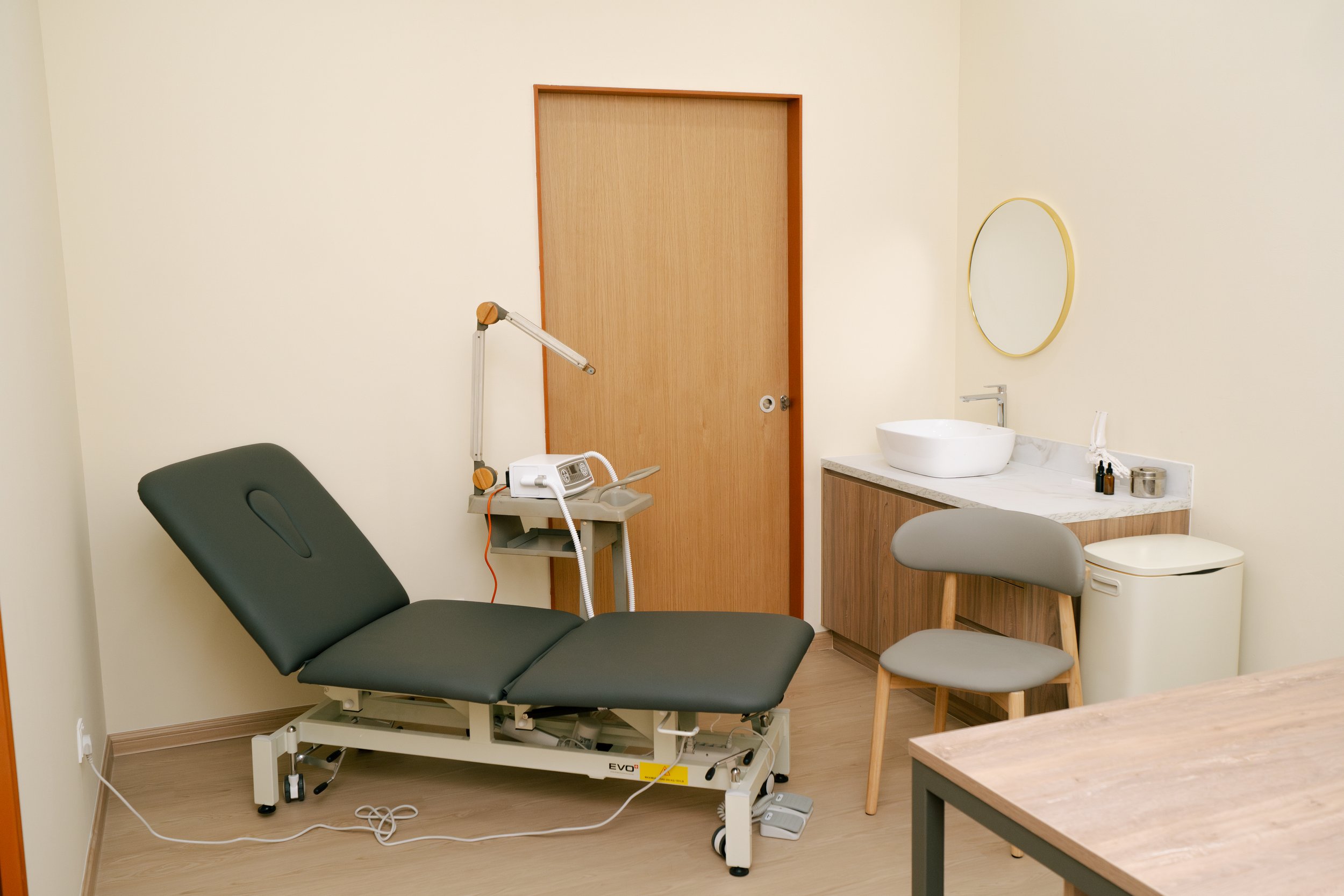
Achilles Tendinopathy
What Is Achilles Tendinopathy?
The Achilles tendon is the strongest tendon in your body and is essential for walking, running, and standing on your toes. Achilles tendinopathy happens when this tendon becomes overused and gradually damaged, leading to pain, stiffness, and reduced function.
Tendinopathy vs. Tendonitis:
Tendonitis is short-term inflammation, while tendinopathy is long-term degeneration. Treating tendinopathy requires more than just rest—it needs proper rehab and load management for lasting recovery.
Two Types of Achilles Tendinopathy
Mid-portion Achilles Tendinopathy
Pain 2–6cm above the heel
Often associated with running or repetitive load
May include a noticeable lump or swelling
Insertional Achilles Tendinopathy
Pain at the point where the tendon attaches to the heel bone
Common in walkers or athletes using tight footwear
May coexist with heel spurs
Accurate diagnosis is essential—some exercises that help mid-portion injuries can worsen insertional injuries. That’s why we customise treatment based on your exact condition.
Common Causes
Achilles tendinopathy typically develops from repetitive overuse or sudden changes in load. Common causes include:
Overtraining or sudden increase in physical activity
Wearing unsupportive or worn-out shoes
Tight calf muscles or poor flexibility
Running on hard or uneven surfaces
Foot biomechanics such as overpronation
Age-related degeneration (typically ages 30–50)
Weight gain or sedentary lifestyle
Conditions like diabetes or rheumatoid arthritis
Signs & Symptoms
Pain or stiffness at the back of the heel
Swelling, warmth, or thickening of the tendon
Pain that worsens with activity, then eases with rest
Morning stiffness that improves with movement
Tenderness when squeezing the tendon
Difficulty standing on tiptoes or bearing weight
A visible lump (in mid-portion cases)
How Achilles Tendinopathy Is Diagnosed
Our podiatrist conducts a comprehensive biomechanical assessment, including:
Gait analysis
Muscle and joint strength testing
Range of motion evaluation
Footwear assessment
Diagnostic imaging referral if needed (e.g. ultrasound)
This ensures a precise diagnosis and tailored treatment plan for the type and stage of your injury.
Treatment Options
When managing Achilles tendinopathy at KL Foot Specialist Podiatry, we provide personalised treatment plans based on your specific condition and activity level. Your care may include:
Custom Orthotics: Correct abnormal biomechanics and reduce strain on the Achilles tendon by improving foot alignment and pressure distribution.
DolorClast® Shockwave Therapy: Delivers high-energy acoustic pulses to stimulate collagen production, promote healing, and reduce chronic tendon pain.
DolorClast® High Power Laser Therapy: A safe, painless laser treatment to reduce inflammation and stimulate tissue regeneration at the cellular level.
Stretching & Strengthening Program: Exercises to improve lower limb mobility and load capacity.
Heel Lifts or Shoe Modifications: We may recommend temporary heel raises or footwear with higher heel drop to reduce strain on the Achilles tendon during recovery.
Self-Care & Prevention Tips
You can also take the following steps at home to support recovery:
POLICE Principle.
Protection – Rest from aggravating activities; use crutches if needed
Optimal Loading – Gentle movement promotes tendon healing
Ice – 15 to 20 minute sessions to reduce inflammation
Compression – Support swelling with bandaging
Elevation – Raise your foot to promote fluid drainageSupportive footwear. Avoid flat shoes and slippers. Choose shoes with heel cushioning and firm arch support to avoid tendon stress.
If you have flat feet, overpronation, or a poor walking pattern, custom orthotics can help reduce excessive strain on your Achilles tendon.
What Happens if Left Untreated?
If Achilles tendinopathy is left untreated, it can progress to more serious issues such as chronic pain and stiffness in the back of the heel or lower calf. In severe cases, this can lead to a tendon rupture, which often requires surgery and lengthy rehabilitation. Untreated tendinopathy will impact your daily routine as it will affect your knees and hips due to the abnormality that is introduced in your walking pattern.
When to See a Podiatrist
You should see a podiatrist if you have pain at the back of your heel or calf that worsens with activity, morning stiffness, swelling along the Achilles tendon, or if the discomfort doesn’t improve with rest or home care. People with flat feet, overpronation, or plantar fasciitis are also at higher risk. At KL Foot Specialist Podiatry, we offer research proven services to help you recover and prevent it from coming back.
-
The best treatment involves a combination of rest, stretching, and strengthening exercises—especially eccentric heel drops. At KL Foot Specialist Podiatry, we also use shockwave therapy, laser therapy, custom orthotics, and biomechanical assessments to address the root cause and promote long-term healing.
-
In mild cases, symptoms may improve with rest and stretching. However, without proper treatment, the condition often worsens or becomes chronic. Professional assessment ensures the right care and prevents further tendon damage.
-
Yes. Custom orthotics help by correcting foot mechanics, reducing tension on the Achilles tendon, and improving alignment. They're especially helpful if you have flat feet or overpronation contributing to the condition.
-
You should avoid high-impact activities that worsen the pain (like running or jumping). However, specific rehabilitation exercises like eccentric calf loading are essential for recovery. A podiatrist can guide you on what’s safe and effective.
Frequently Asked Questions
Schedule Your Achilles Tendinopathy Assessment Now
KL Foot Specialist Podiatry provides expert, evidence-based care for Achilles tendinopathy in Kuala Lumpur. Get in touch with us today to begin your personalised treatment and recovery plan.
